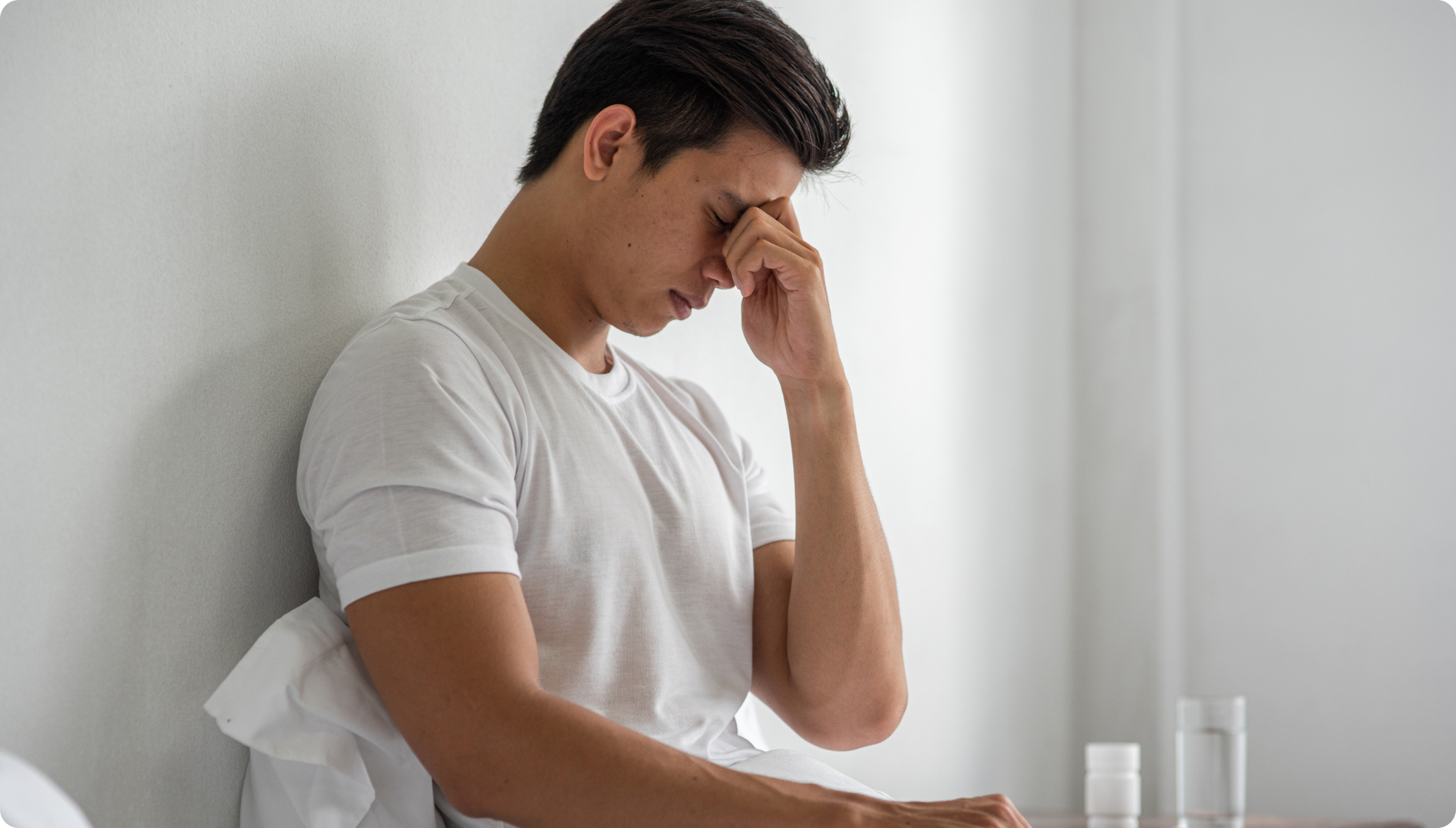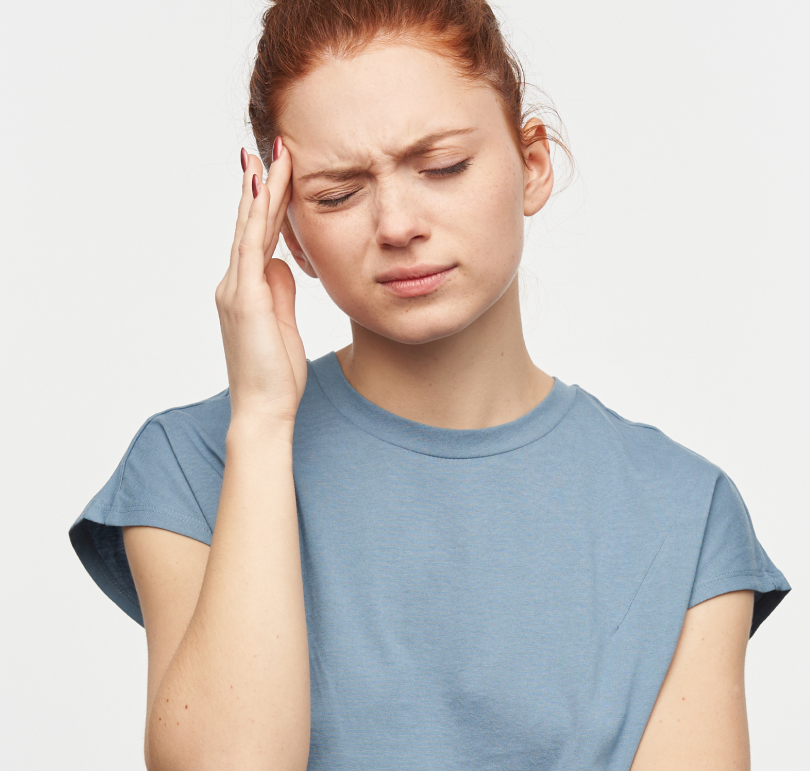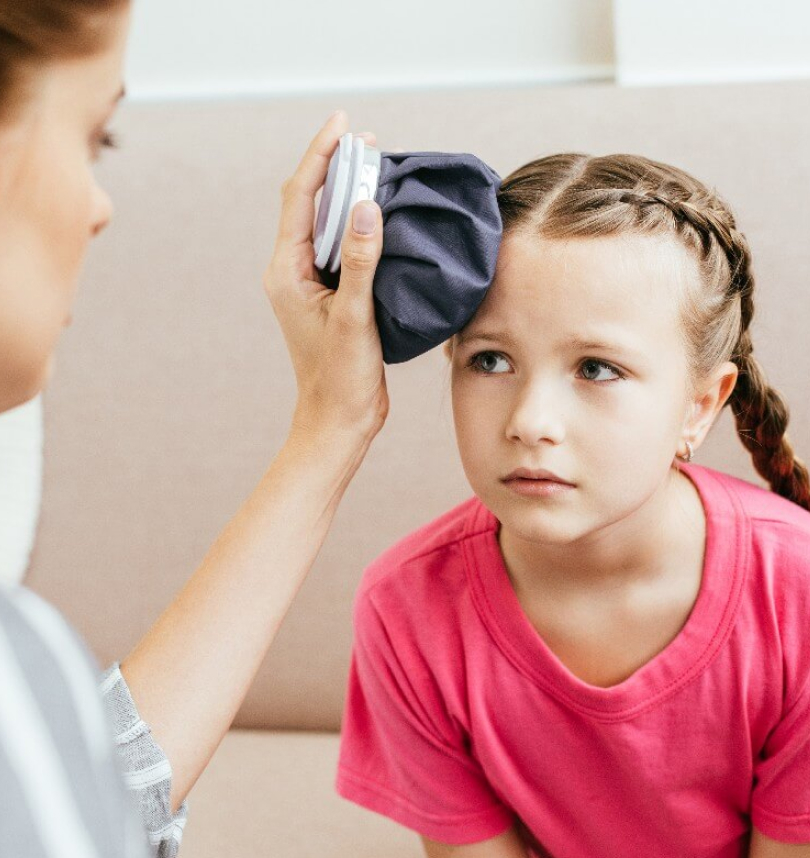Headaches After Head Injury:
What You Need To Know
It may be your eyes:
Headaches After Head Injury: What You Need To Know
It may be your eyes:

Did you hit your head and are experiencing headaches? Headaches are common after a head injury, but if your symptoms are lasting more than a few weeks and interfering with your life, it could be your eyes.

What is a Head Injury?
A head injury is any harm done to your brain or skull, also known as a Traumatic Brain Injury (TBI). They can range from mild to severe.
The different types of head injuries can include:
Concussion: A concussion occurs when the brain is injured, either directly from a blow to the head or indirectly when the head moves rapidly back and forth (whiplash). A concussion is a type of Traumatic Brain Injury (TBI). Specifically, Post Concussion Syndrome, also known as PCS, is diagnosed when the symptoms of a concussion last for longer than three months. It should be noted that you do not need to lose consciousness to develop PCS, and a mild concussion can lead to severe symptoms (headaches, dizziness, disorientation).
Fractured Skull: This is when your skull is cracked.
Brain Contusion: This occurs when your brain is bruised.
What Causes Headaches After Head Injury?
The causes of your headaches after a head injury can be the result of:
- Car accident
- Sports Injury
- Military explosion/blast injury
- Falls
- Any blunt force trauma to the head
Not everyone who experiences trauma to the head or whiplash will have a concussion or head injury, but individuals who have had concussions in the past are more likely to experience them again. Additionally, women are more prone to concussions due to having less muscular necks. Another factor that could contribute to the higher rate of concussions among women is the fact that the female head tends to be smaller than that of a male.
Female hormones are thought to play a role in concussions as well, leading women to experience symptoms like dizziness and nausea – common after a concussion – more acutely than men. Additionally, women tend to report and seek treatment for concussion symptoms more often than men, which in turn has an impact on the statistics.
Headache After Head Injury: Additional Symptoms
Anytime you injure your head you are at risk of developing a range of symptoms that can include:
- Dizziness
- Headaches
- Light and noise sensitivity
- Nausea
- Insomnia
- Anxiety
- Fatigue
- Irritability
- Difficulties with memory
- Difficulties concentrating

How Long Will Headaches Last After Head Injury?
Treatment and proper recovery are key when healing from a TBI headache or any TBI symptom. Exactly how long it takes for you to fully recover will depend on the specific injury. Regardless of what is causing the headaches, rest and minimizing stress are always important.
If a second injury occurs while you are still healing from the initial head injury, this can substantially prolong your recovery time.
What Type of Headaches Will Come After a Head Injury?
If you experience a head injury or a headache after brain injury, your headaches might be one of the below. There are a large variety of headaches, but these are some of the most common.
Migraines: A migraine after head injury (a concussion migraine) are sometimes the result of specific areas of the brain becoming hypersensitive. The symptoms often involve throbbing and sensitivity to light and sound. Migraines after concussion can also sometimes involve nausea or vomiting and an aura, which is when you see spots.
Tension-type Headaches: Muscle spasms in the head can sometimes result in tightness around the head.
Cervicogenic Headaches: These headaches occur when the muscles or soft tissues in the neck and behind the head have sustained an injury. Symptoms tend to include pain when the neck is moved and pain in the shoulders, neck, and behind the head.
Rebound Headaches: These types of headaches typically occur as a result of the side effects of some pain medications.
How Do You Get Rid of a Headache After Hitting Your Head?
Rest and minimizing stress are the most important things you can do to help your body recover from a headache after a head injury and other symptoms. Sometimes over-the-counter pain medicines can help, such as acetaminophen or ibuprofen.
It Could Be Your Eyes: Binocular Vision Dysfunction (BVD)
When someone experiences a head injury or concussion, part of the area that is injured involves the pathways that help to align the eyes. If you have been suffering from lingering symptoms, it could actually be due to an entirely different condition known as Binocular Vision Dysfunction (BVD).
BVD occurs when our eyes are slightly misaligned. While this misalignment can be very subtle, it can make it incredibly difficult for our eyes to send one clear image to our brain.
Here’s what happens when someone has BVD: With two eyes, we are able to see one clear image. This is because our brain is able to transform the images seen by each eye (which are synchronized and very similar to each other) into a single image, which is known as binocular vision.
In patients with BVD, there is a slight misalignment between their eyes resulting in their eyes being out of sync with one another, causing the brain to have a very difficult time processing those two unsynchronized and dissimilar images to form one clear image.
The result? The brain forces the eye aligning muscles to fix the problem by realigning the eyes. But the realignment is only temporary and misalignment then recurs, which is followed closely by realignment, and the cycle of misalignment and realignment continues. Over time, this places an immense amount of strain on the eye muscles and leads to dizziness and headaches, as well as a variety of other symptoms.
Symptoms of BVD
Common Symptoms for Adults and Children 14+ with Binocular Vision Dysfunction
The following is a list of common symptoms in adults with BVD:
- Headaches
- Dizziness
- Nausea
- Anxiety
- Sensitivity to light
- Difficulty with balance / unsteady walking
- Pain in the neck
- Frequent head tilt
- Motion sickness
- Difficulty reading and learning

Symptoms of BVD in Children Ages 4 to 8-years-old
- Poor handwriting (poor spacing, writing letters too big or small)
- Difficulty reading
- Avoiding activities
- Playing with toys very close to their face
- Sitting close to the TV
- Difficulty identifying shapes, colors and numbers that are age-appropriate
- Difficulty seeing the class board
- Frequently bumping into objects
- Difficulty catching balls
- Stomach aches and headaches at school or away from home
- Light sensitivity
- Covering one eye to see
- Anxiety in public places
- Frequent squinting in order to see

Symptoms of BVD in Children Ages 9 to 13-years-old
- Repeatedly bumping into things while walking
- Having difficulty completing homework due to headaches and nausea
- Repeatedly reading the same things over and over
- Sensitivity to bright lights
- Closing one eye to make it easier to see
- Blurred vision when using the computer
- Blurred vision or tired eyes when looking at the blackboard in class
- Verbal skills that are ahead of reading skills
- Frequent blinking

How Is BVD Treated?
Microprism lenses can help to treat BVD by correcting the image misalignment. These lenses bend light in a way that the images seen by your eyes are moved into the position they need to be in, resulting in realigned images. When the images seen by your two eyes are realigned, your brain can easily transform them into one, singular image. Your headache and nausea and other uncomfortable symptoms caused by BVD are significantly reduced or eliminated.
In fact, the average patient will notice a 50% reduction of symptoms by the end of their first visit. Over the next several visits, our team at Vision Specialists of Michigan will fine-tune your lenses so that your headache, nausea, and other BVD symptoms can continue to improve and be eliminated.
Diagnosing BVD
In order to determine if your headaches after head injury and other symptoms are a result of BVD, we recommend you visit your primary care physician or a specialist to rule out other causes. If no cause is found for the symptoms, our team at Vision Specialists of Michigan can help determine if BVD is the issue.
During your visit:
1. We ask you to fill out a specialized questionnaire designed to screen for those who might have BVD.
2. You will be asked to complete a detailed Health History form.
3. An eye exam is performed to determine the need for correction of nearsightedness, farsightedness, and astigmatism (a common imperfection in the eye’s curvature).
4. A specialized exam is performed (NeuroVisual Examination) to determine if visual misalignment is present.
5. If diagnosed with BVD, you will be fitted with a trial version of their new prescription. Most people notice a significant improvement in their symptoms within just a few minutes of putting on the trial lenses.
You can expect to spend approximately 3 hours in our office during your visit.
Get Treatment
If you or a loved one are experiencing headaches or other symptoms mentioned above, contact our team at Vision Specialists of Michigan. If BVD is causing your visual symptoms, our microprism lenses just might be the solution you need.
Watch these videos of BVD patient experiences:
Traumatic Brain Injury Treatment with Glasses: Drew’s Binocular Vision Dysfunction Story
Robin’s Traumatic Brain Injury: “Can I still be a nurse?”
Dizziness Treatment with Glasses: Elizabeth’s Traumatic Brain Injury Story
People also view
It may be your eyes
Daily Stomach Ache, Headache, Nausea:
Christine's Binocular Vision Dysfunction Story
Headaches and Learning Challenges:
Kali's Binocular Vision Dysfunction Story
Years of Daily Headaches, Nausea, and Dizziness:









